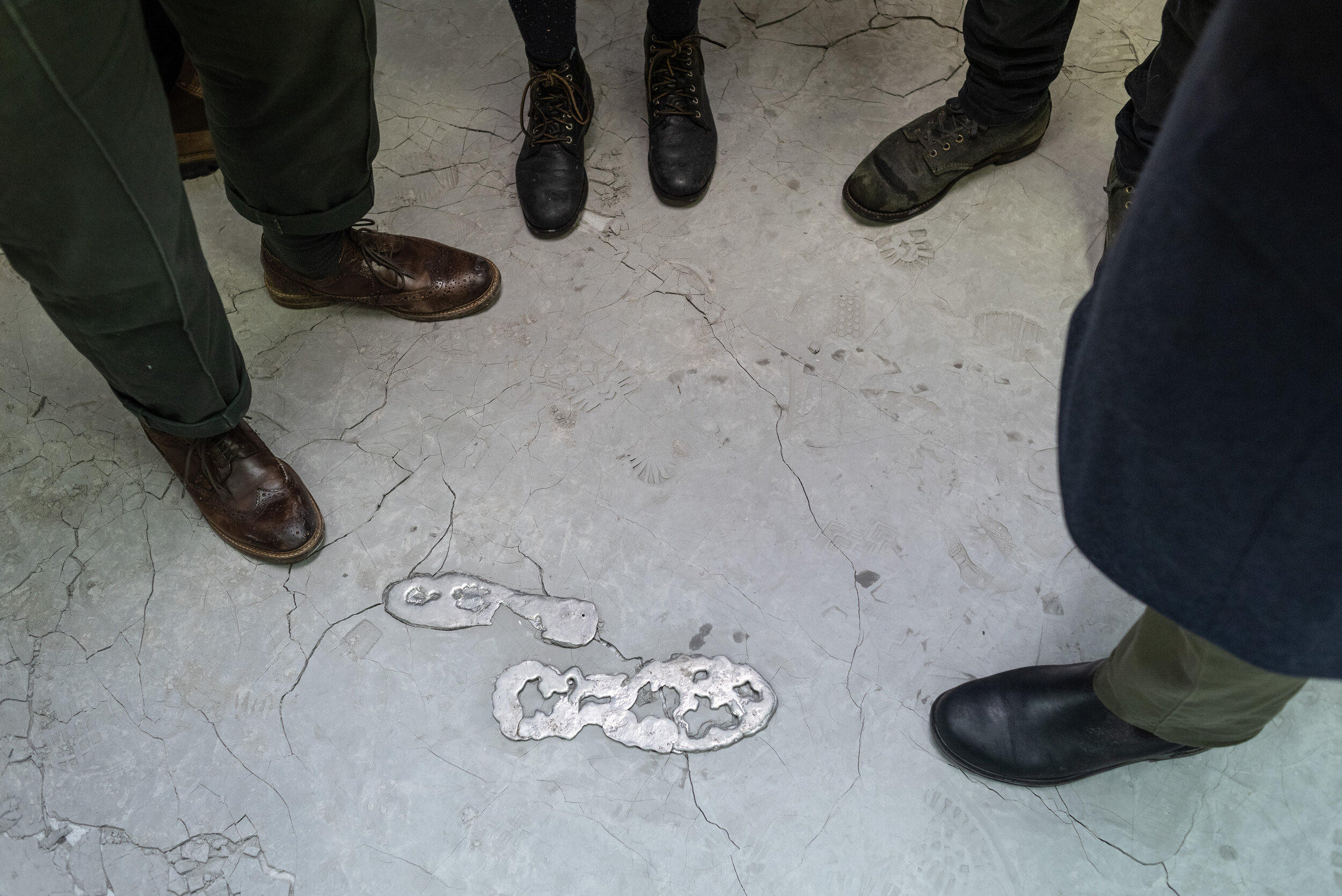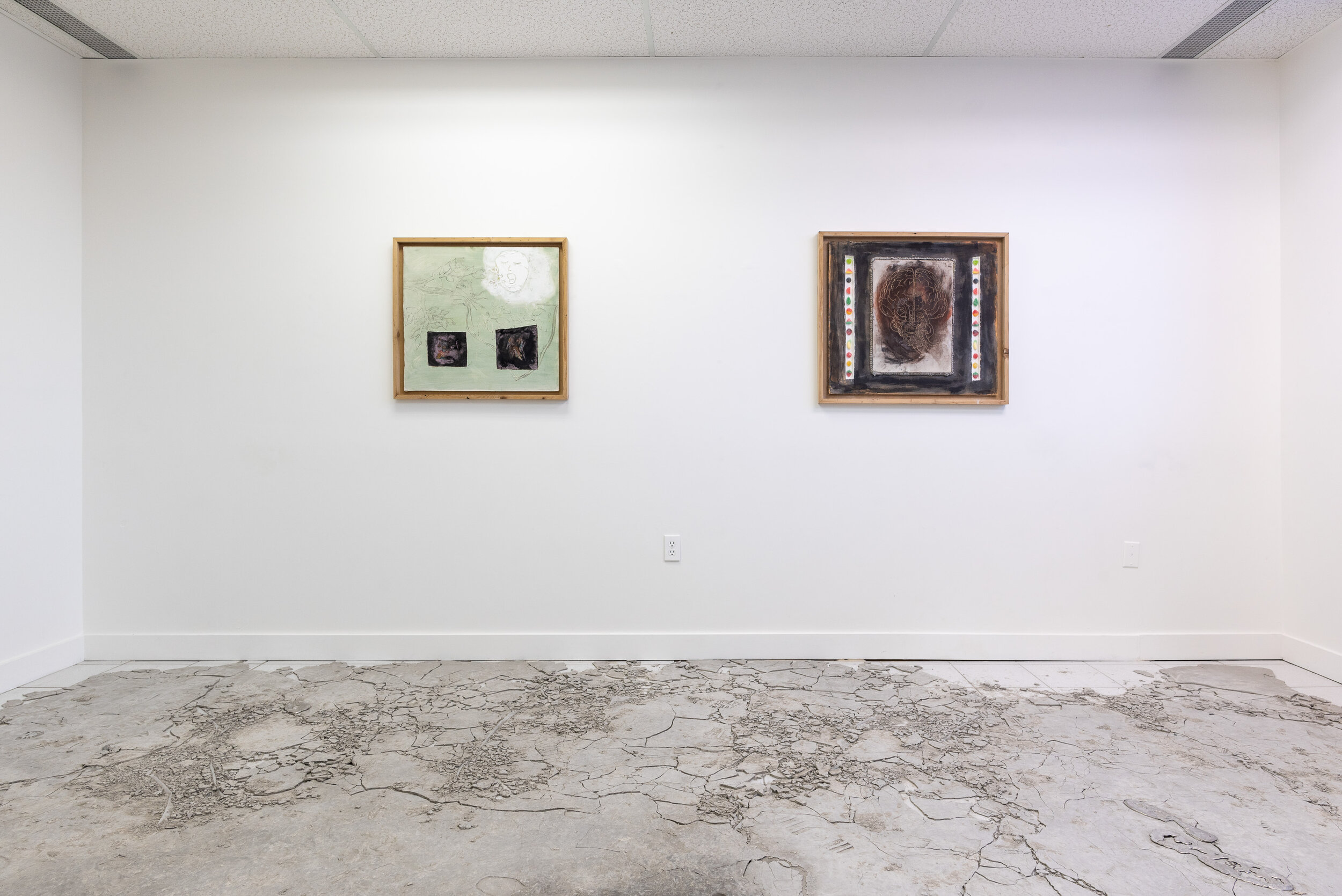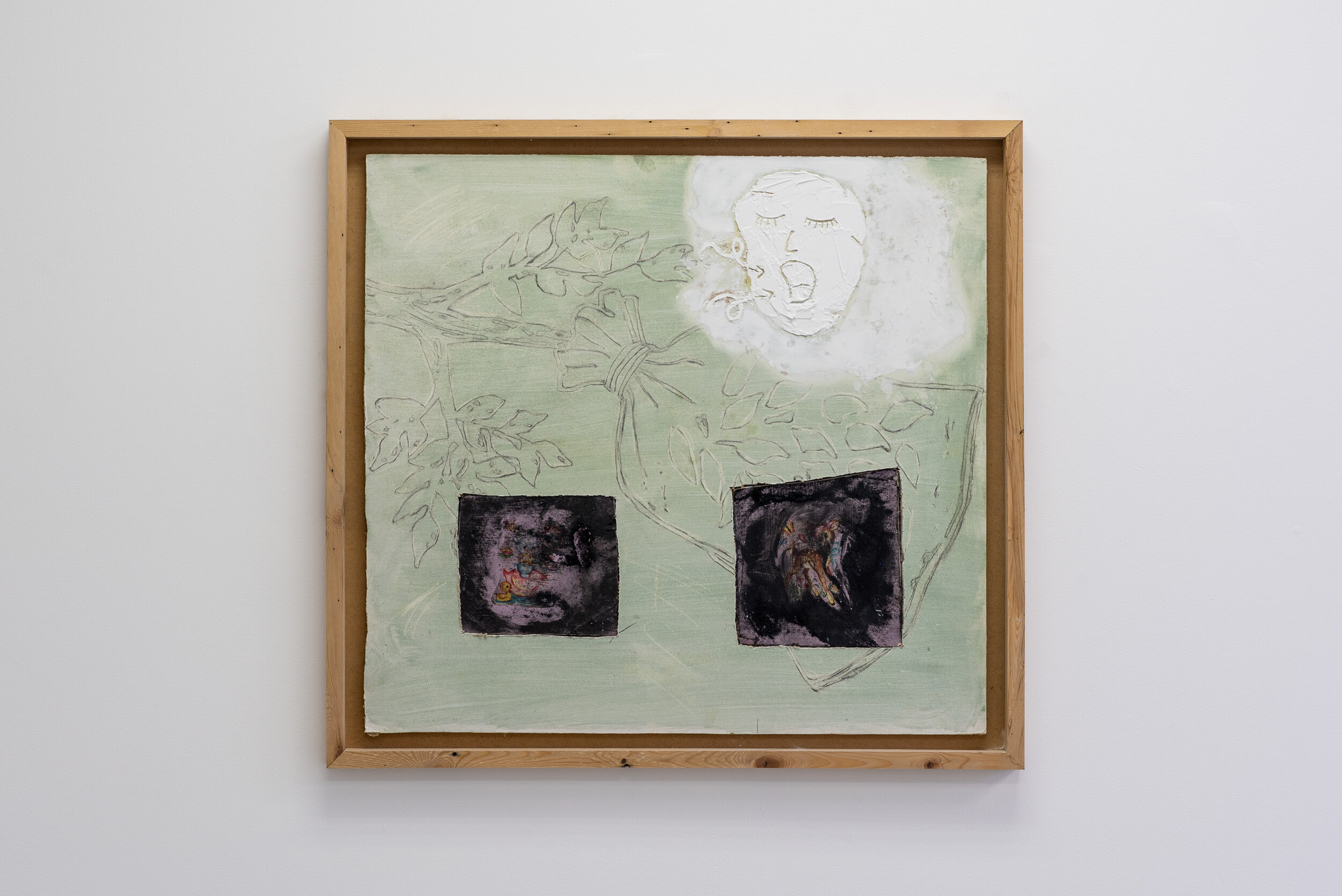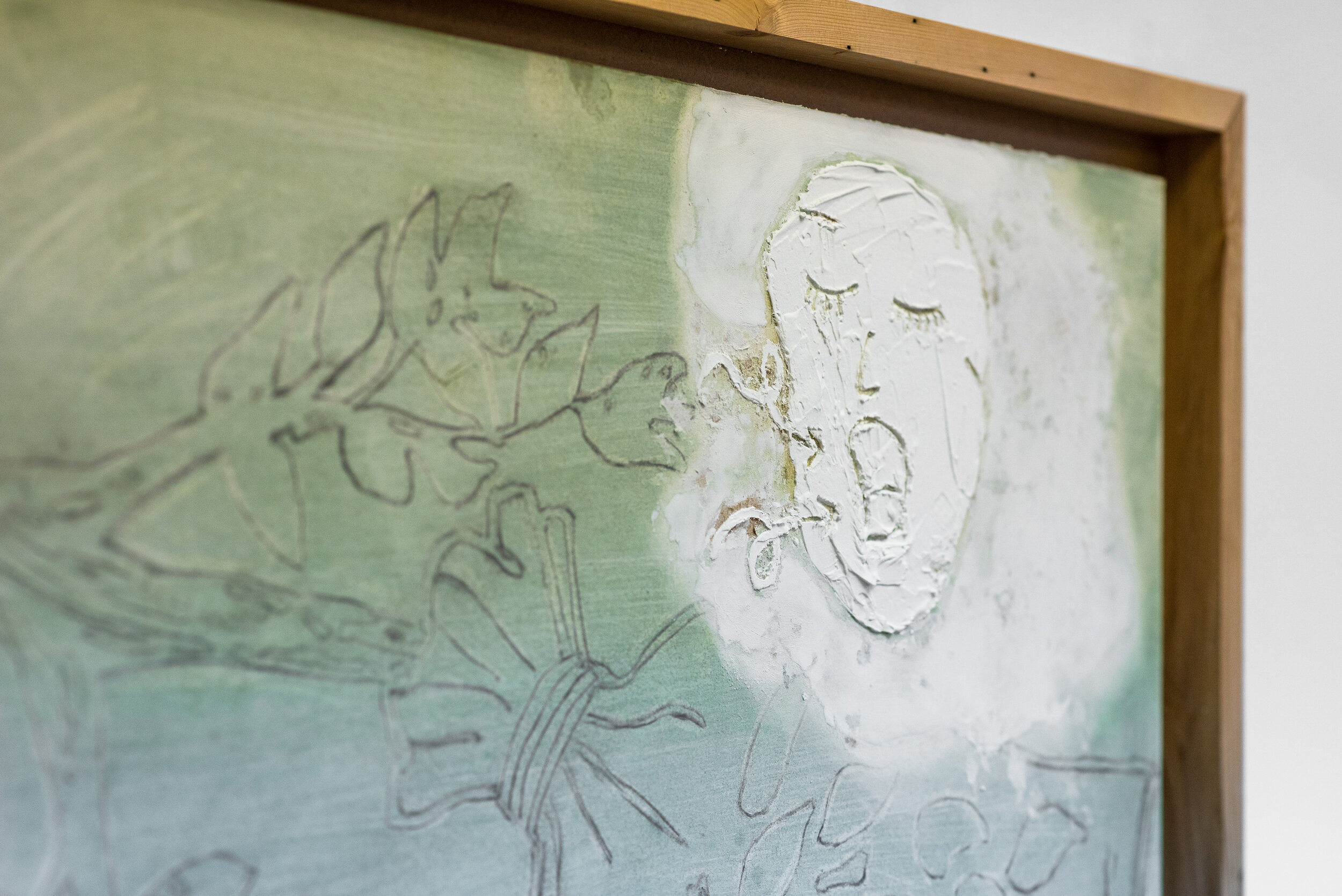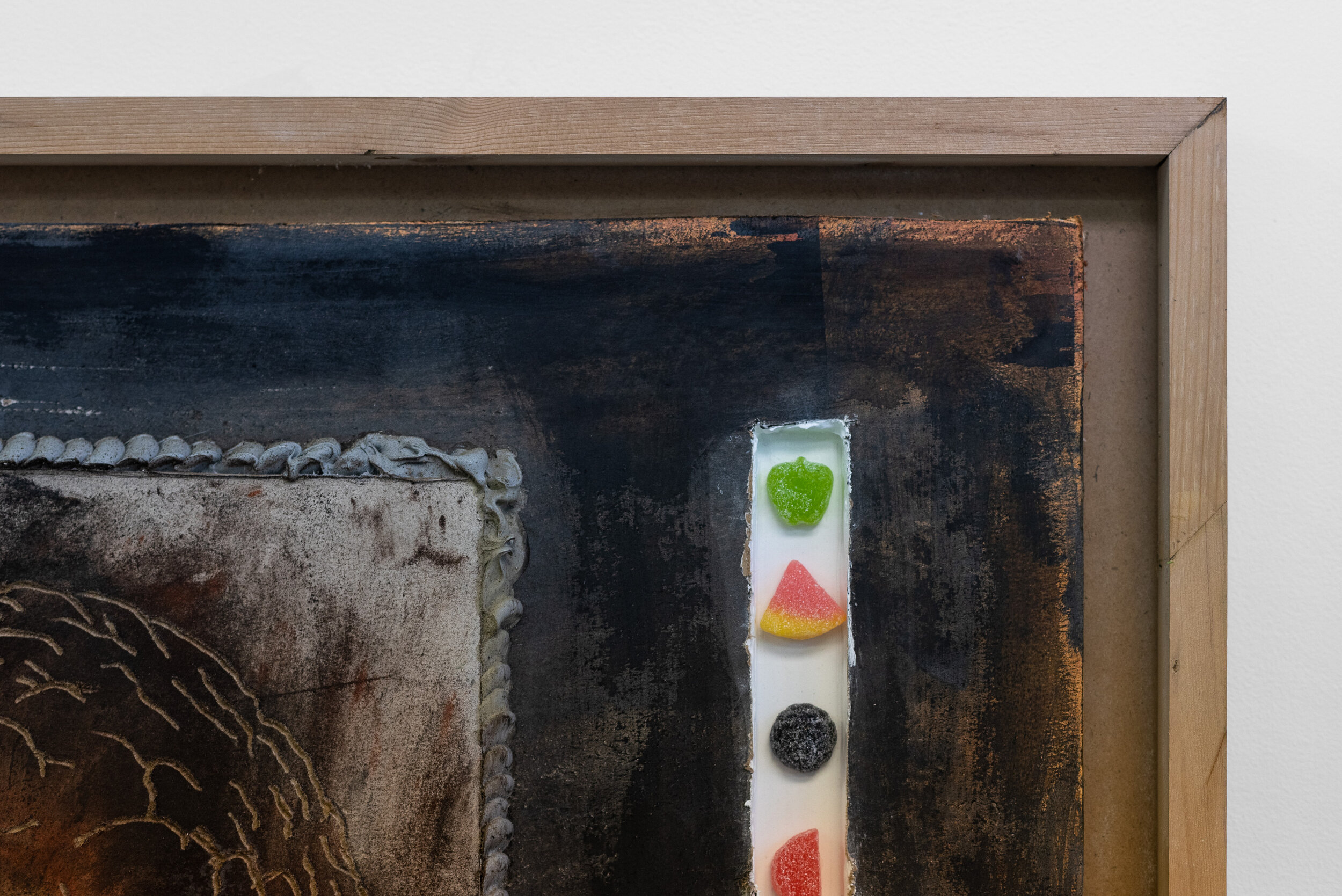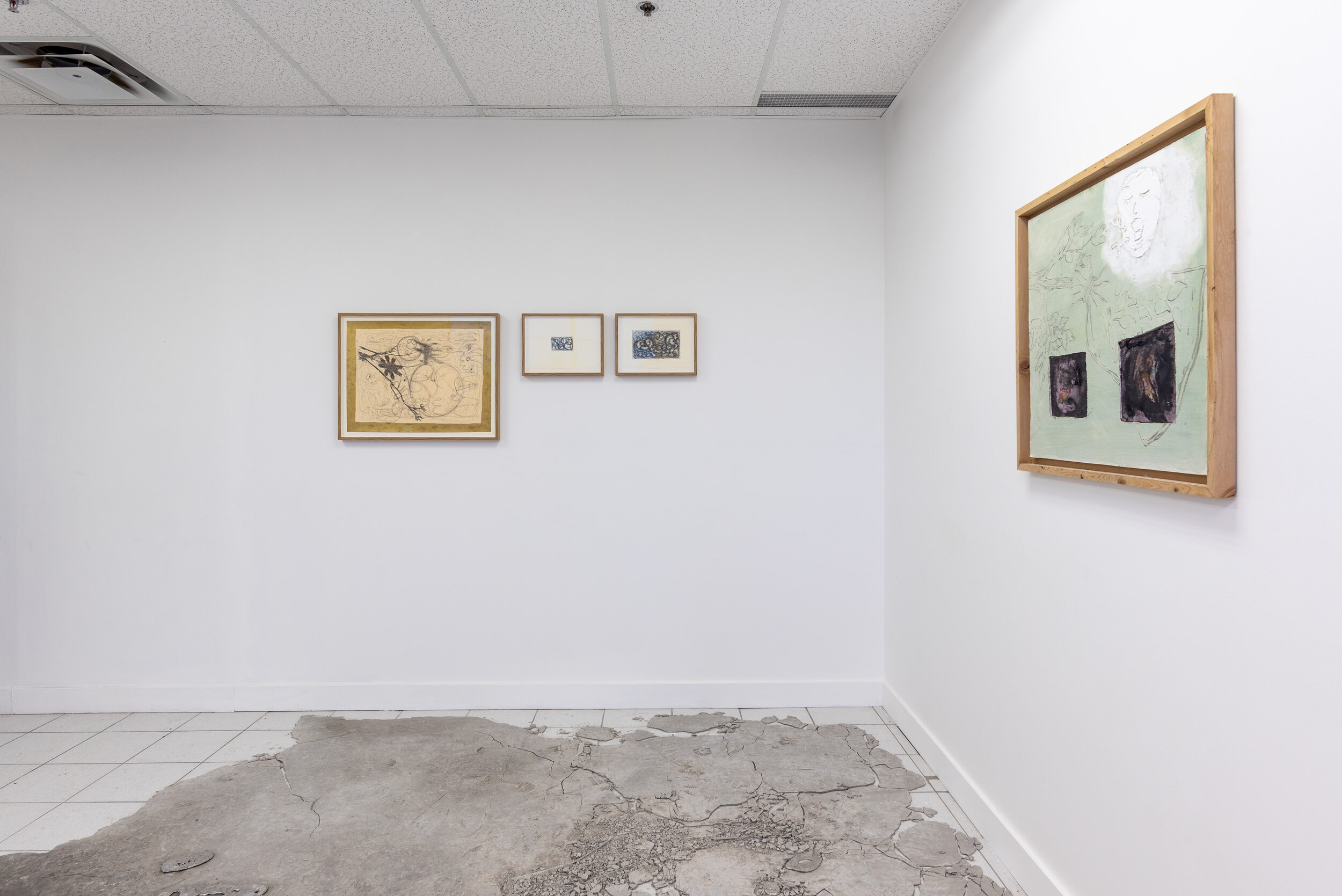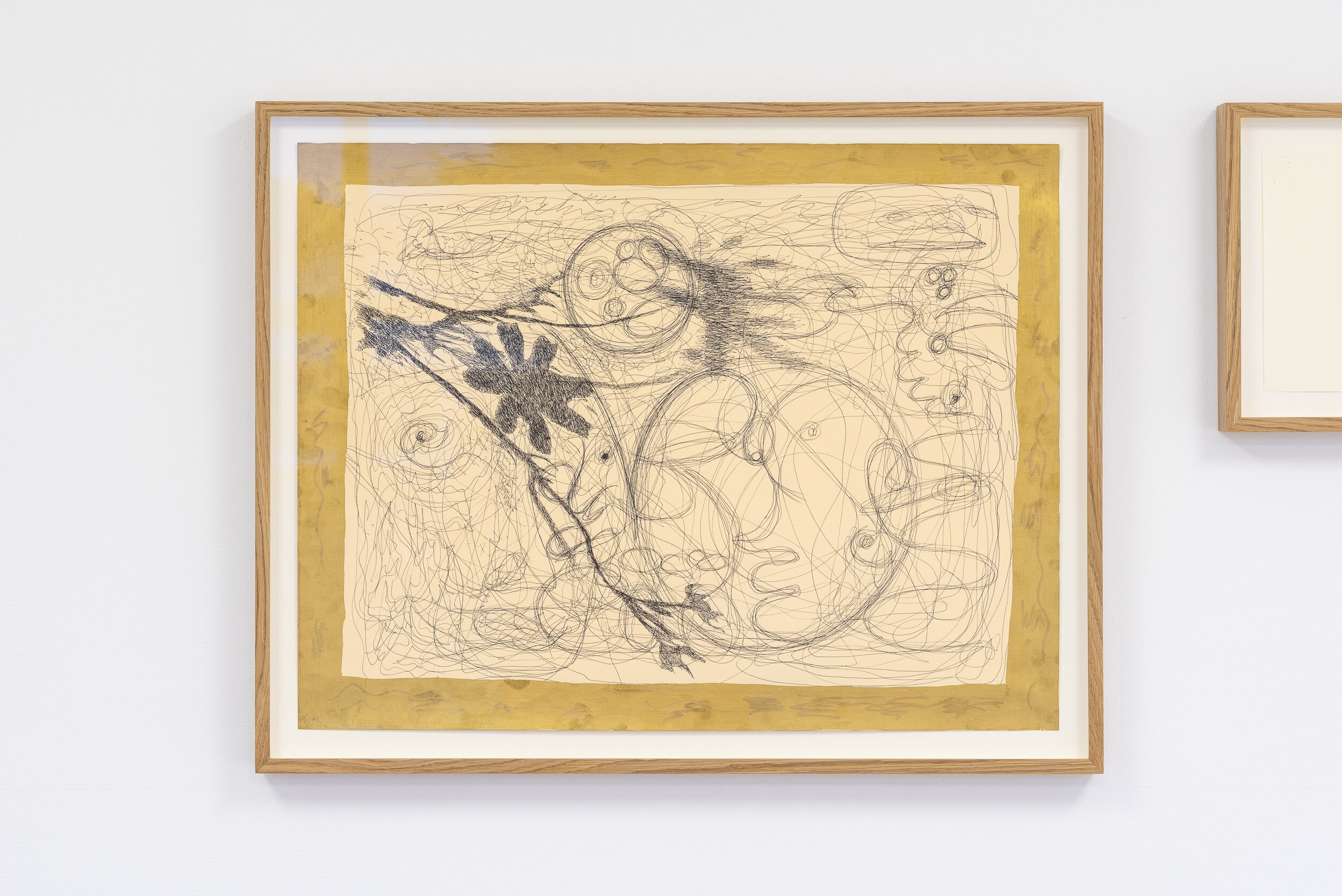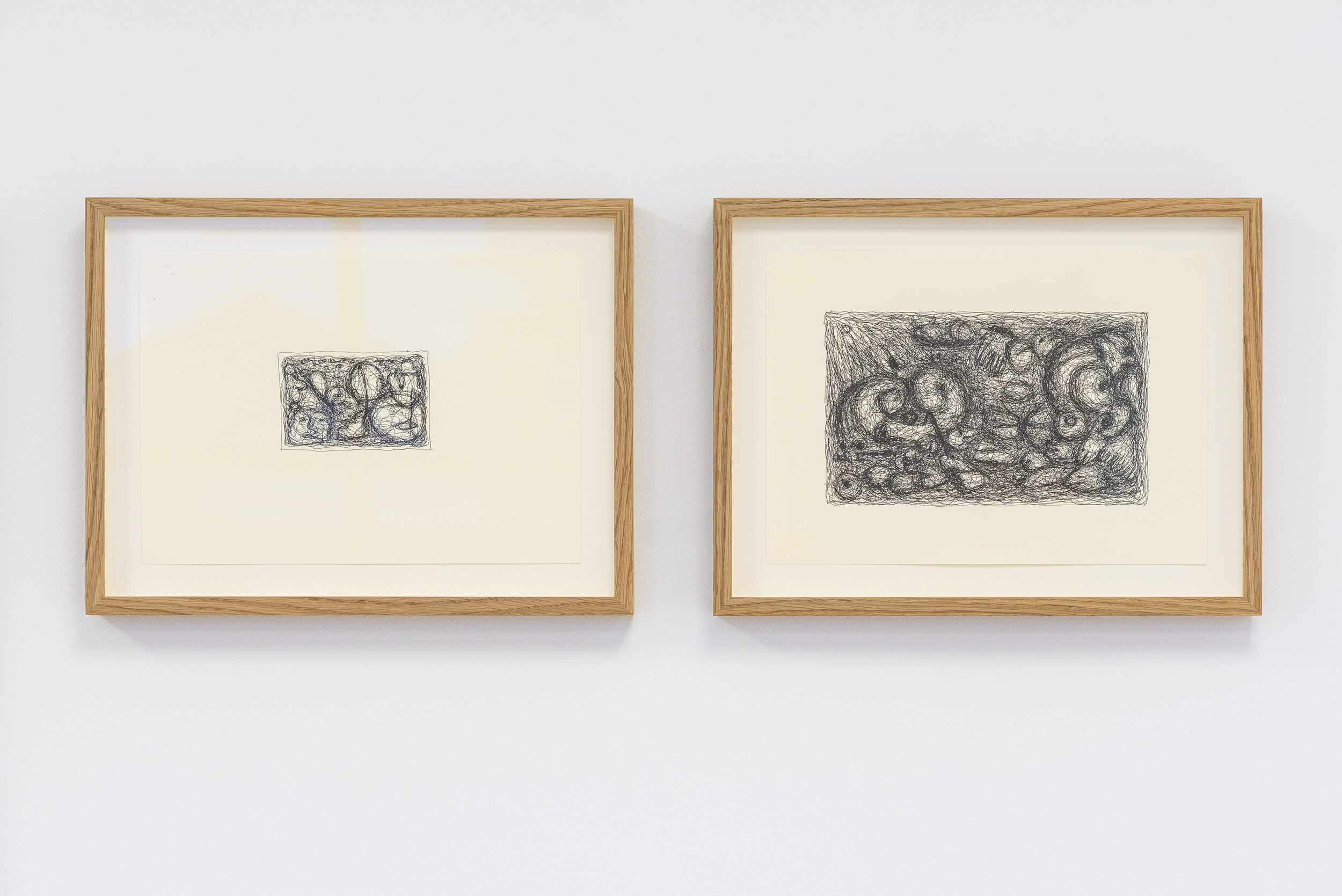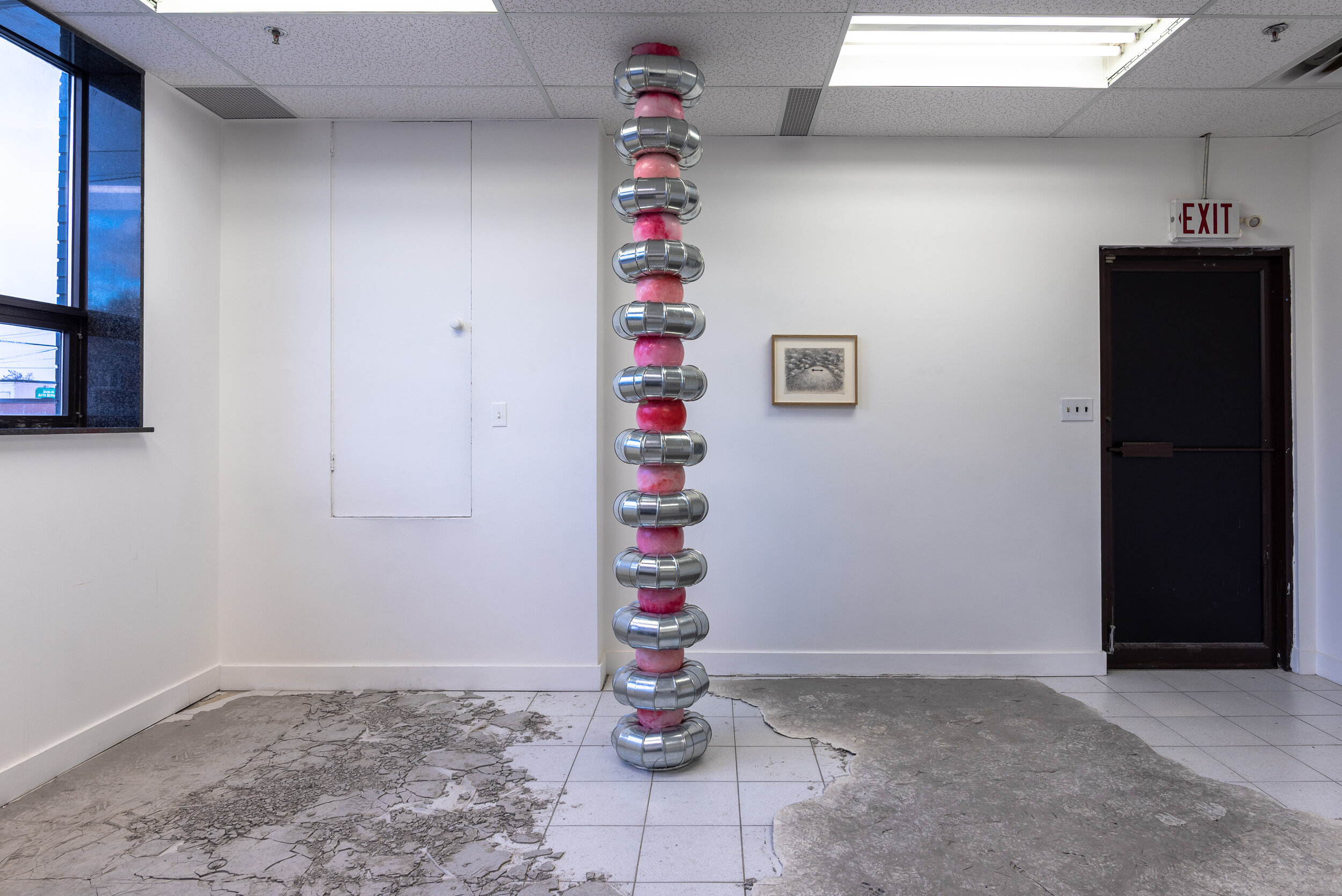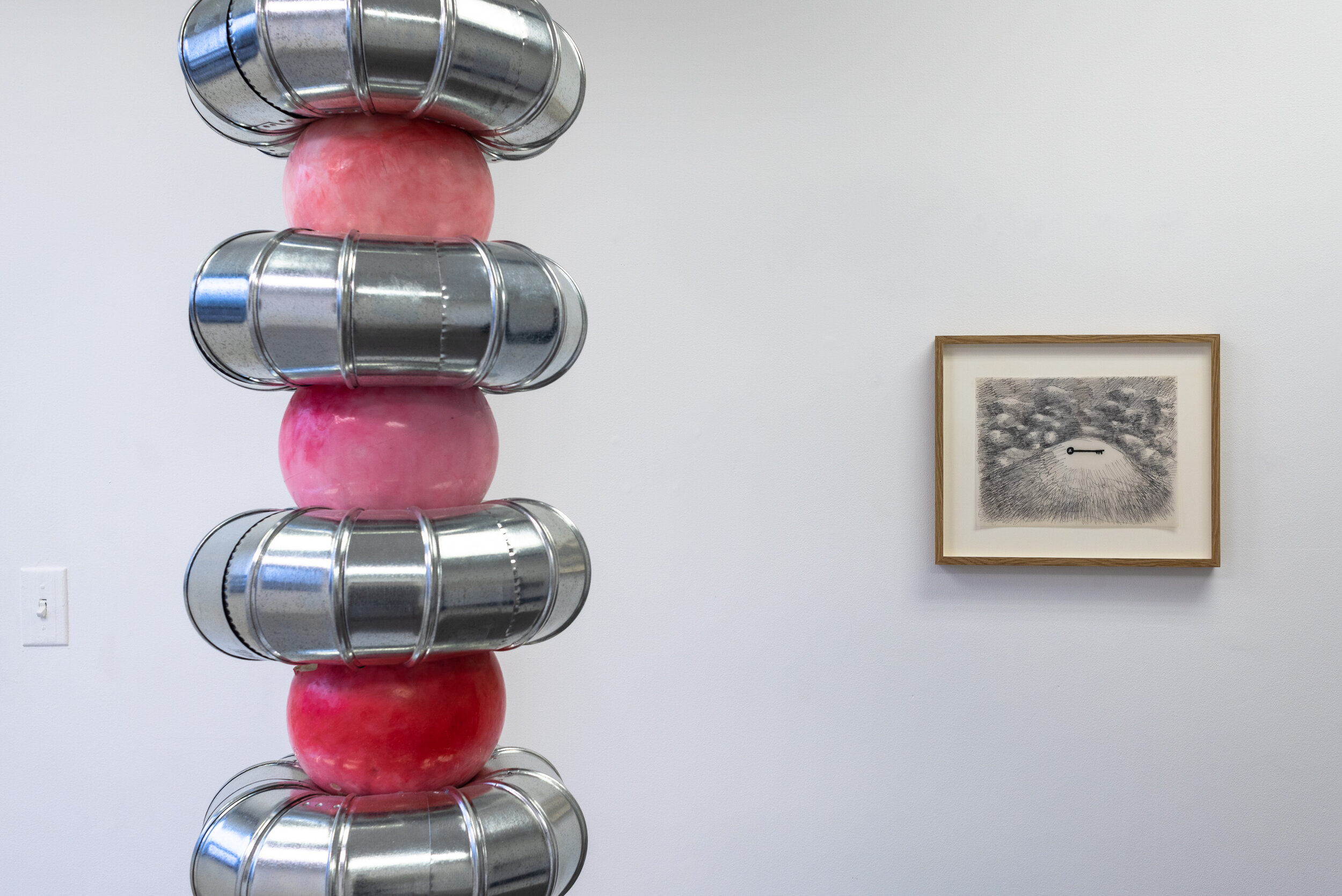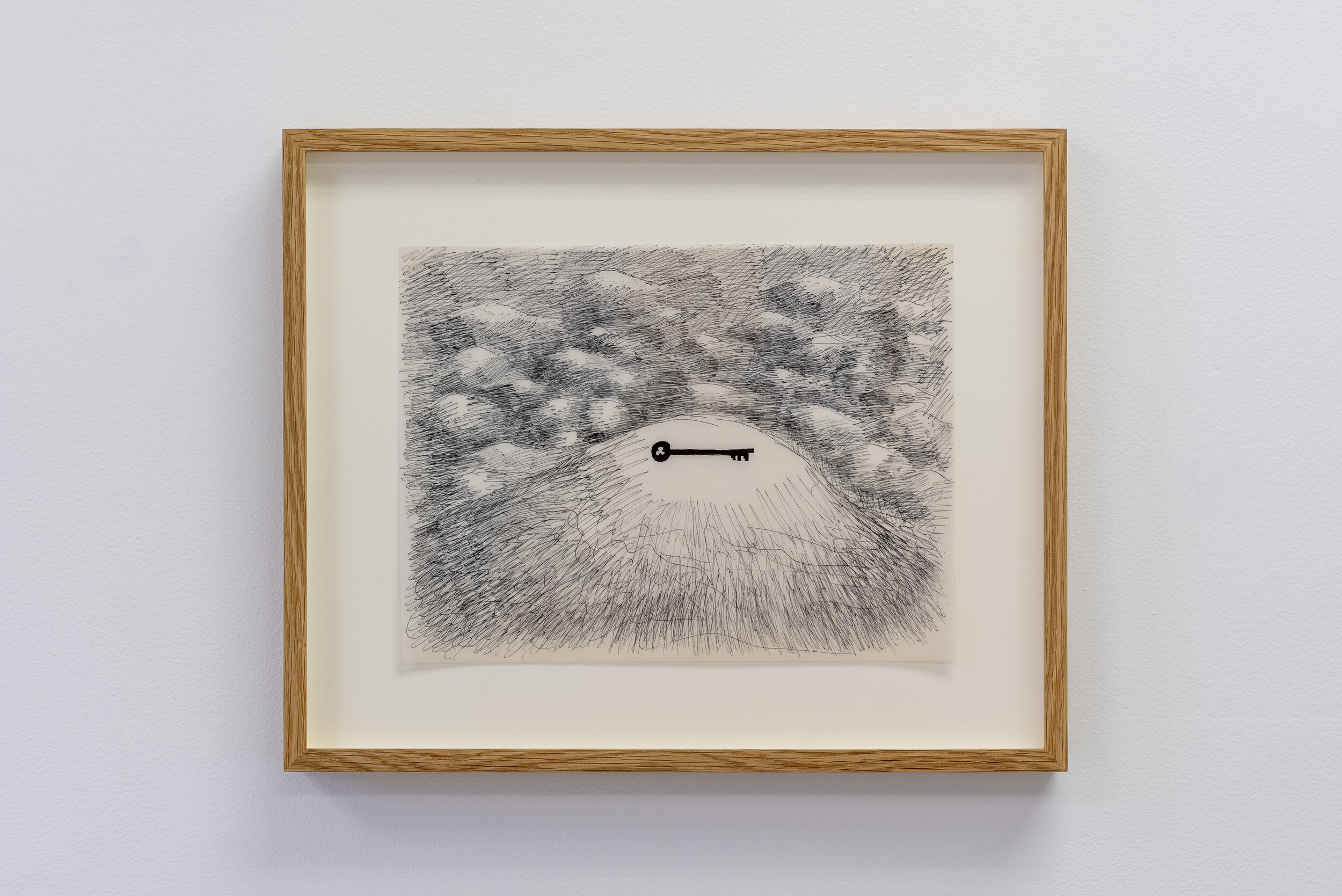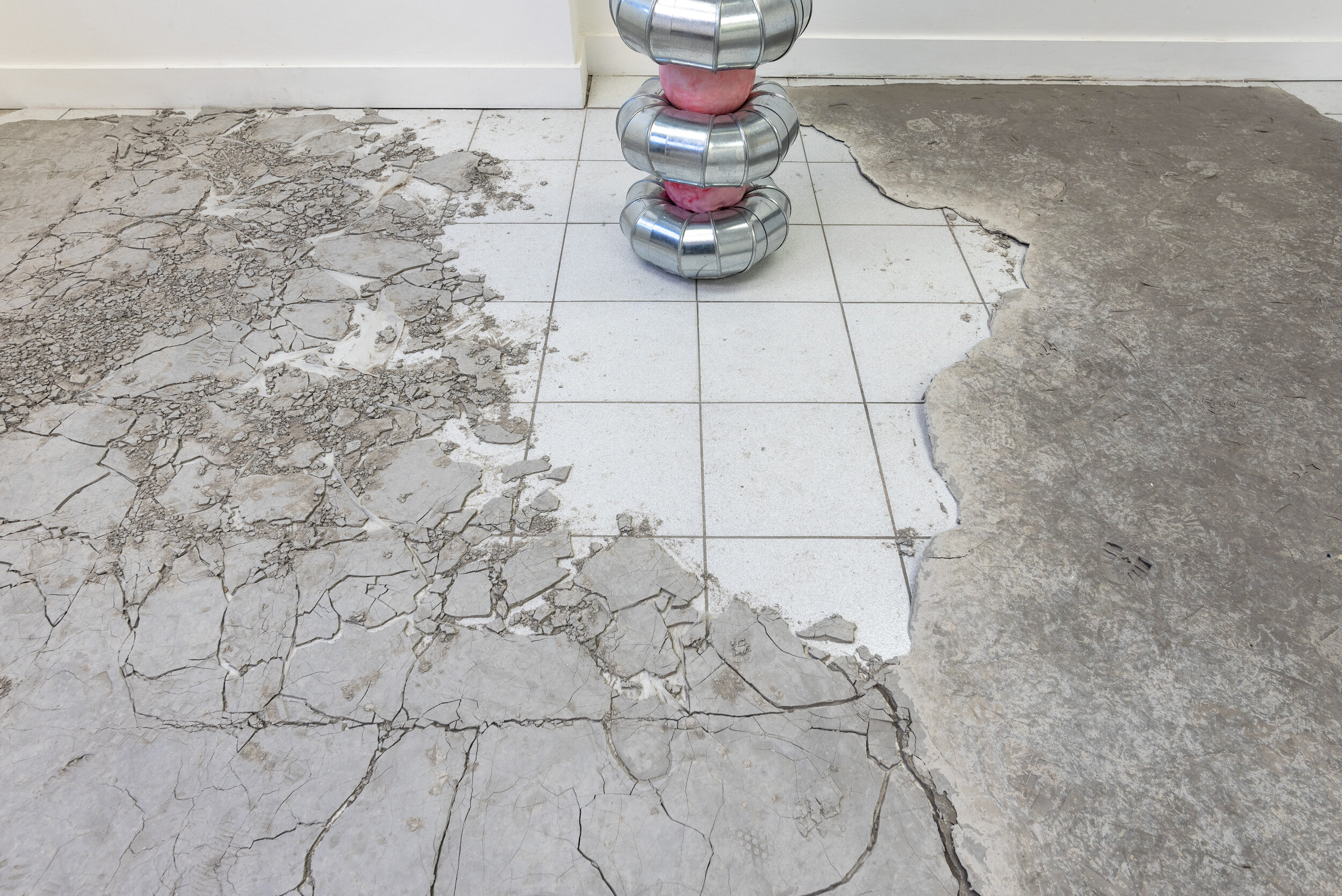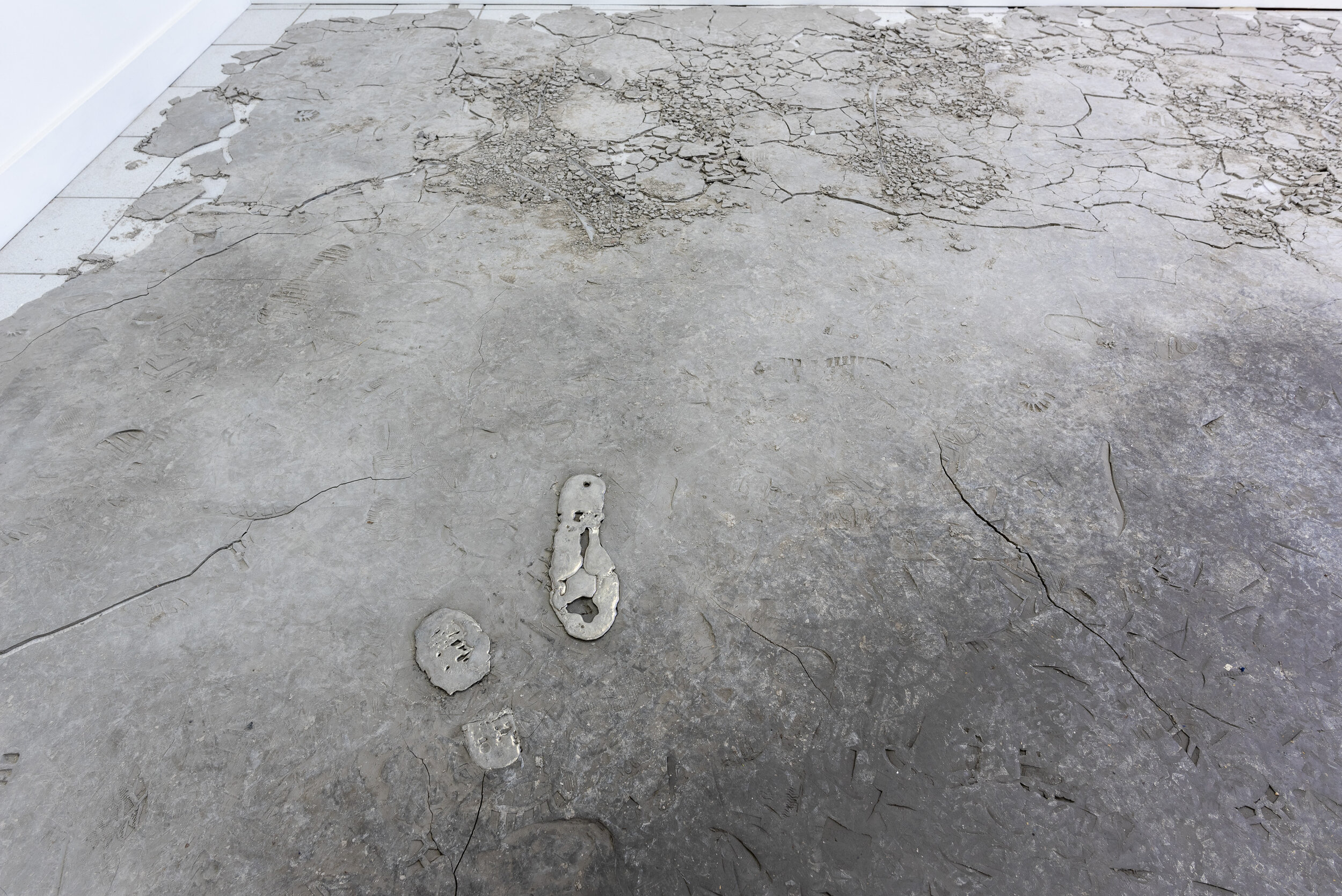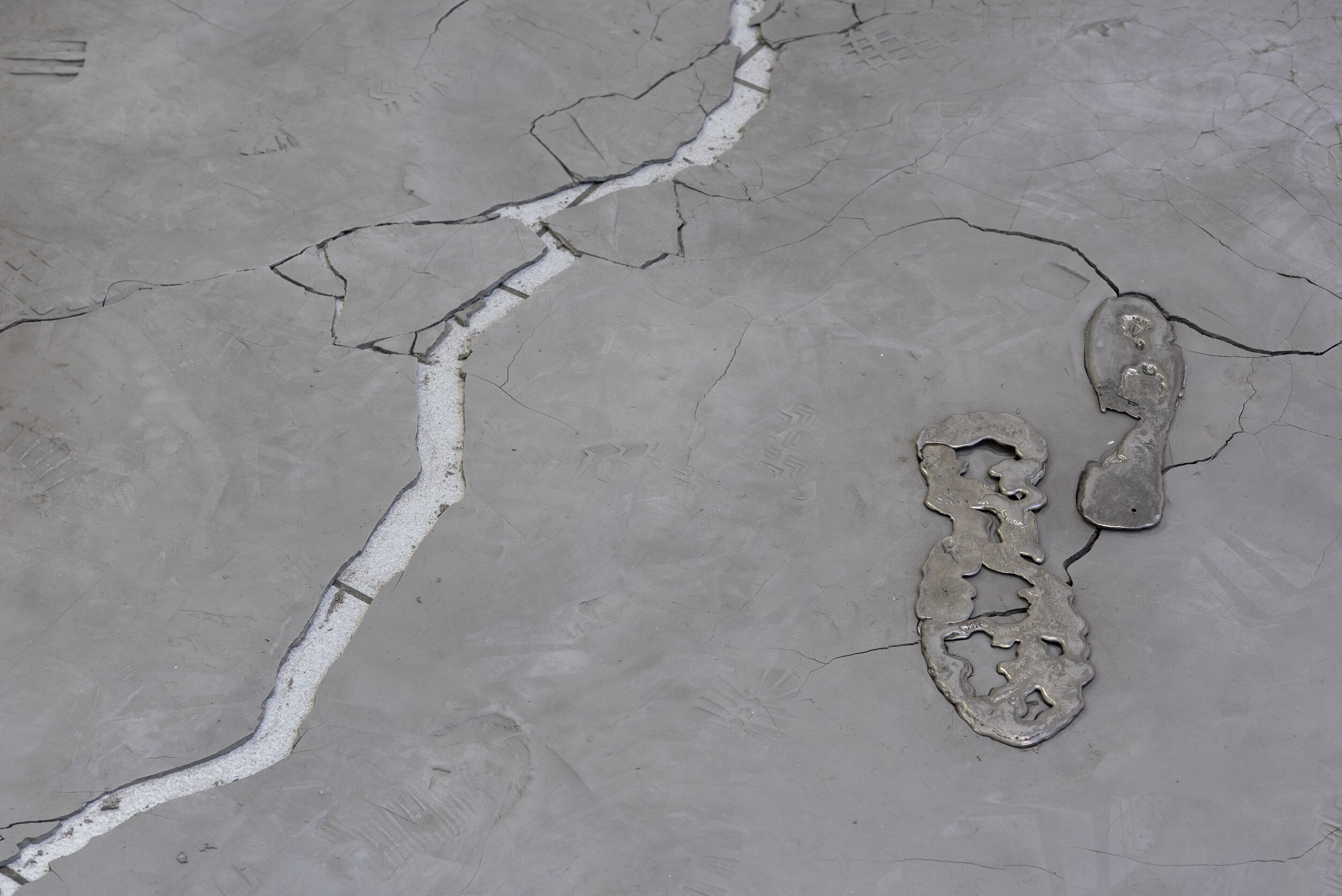...5,1,4,1,3—Done!
Stephane Gaulin-Brown, Shannon Garden-Smith, Craig Spence
December 14, 2019 — January 18, 2020
@
Pumice Raft
348 Ryding Ave, Unit 103
Toronto, ON M6N 1H5
Meaning is messy!
“...5,1,4,1,3—Done!”
exclaims a haggard old man.
“You look exhausted, what have you been doing?”
says a confused onlooker.
“Reciting the complete decimal expansion of π backward.”
So goes an old joke by Austrian philosopher Ludwig Wittgenstein. A beginningless individual borders on contradiction. Maybe it’s here that one of the oldest paradoxes emerges: an infinite end becomes a permanent coming into being. Embracing the ambiguity of contradiction is what lead Anaximander (ca. 610 B.C.E - 585 B.C.E.) to solving this riddle of origin.1 The subtext of this riddle shows how the anticipation of a beginning is full of possibility. Before the gunshot of a 100-metre dash, even the slowest sprinter on the line could imagine crossing the finish first. This space is generative. Here we observe meaning in the making.
What does it mean to have meaning? It is hard to even think of a way of defining meaning without giving the simple answer of “what something means.” Is meaning simply a product of the human experience that we imbue onto the world around us? After all the human is a relational being. Through this paradigm we find meaning primarily from the relationships between one another and how we are in relation to the objects around us. The idea being that a hammer is only a tool when the carpenter picks it up to use it. I’m suspicious of this explanation.
Conversely, we can also think of meaning and relation on a cosmic level in that we live in a universe where everything, eventually, can be reduced to subatomic particles crashing into each other. In 1969, Joni Mitchell wrote the lyrics “we
are stardust, we are golden” for her song titled Woodstock while watching television coverage of the iconic music festival that she was meant to be performing at. Three years later, Carl Sagan riffed on Mitchell’s lyrics and declared that “we are made of star-stuff.” Here we see a synthesis of hippie spiritual existentialism and modern scientific thought. Sagan’s quote is not only unifying for its universality but it also proposes that the timescale of meaning is not necessarily dependant on the human lifespan but rather the cosmos itself.
I wonder if there is a unique element of meaning embedded in the physical material of the earth itself that is not dependent on immediate activation through relation but rather that the evidence of relation incurs in the world over time. Like water slowly eroding and creating striations within rock, this type of embedded meaning encourages a meditation on the accumulation of relation and the potential for its discovery.
For some reason, though, it is easy to get caught up in the results of a pursuit and not the process of pursuing. At the wrong end of intention we find regret in achievements that come in the wake of a loss of relation. The anxiety of running the race comes from fixating on a specific end and not being able to delight in the infinite permutations and combinations of possibility. Internalizing this idea is a work in progress.
This exhibition features work that embodies the accumulation of meaning within the materiality of the work itself. These works oscillate between the human scale and the ecological scale of meaning in order to provide a portal or shortcut for those who come to gaze upon them. In Craig Spence’s sculptural wall works, created from reclaimed housing materials, we see evidence of how childhood memory can be soaked into the drywall and wooden studs of a family home. Similarly, Shannon Garden-Smith’s site- responsive floor installation depicts embedded traces of not only the labour of the artist but also of the local community via cast shoe tread impressions into the gallery floor. Stephane Gaulin-Brown’s works on paper employ a variation of the Automatiste drawing technique where subconscious intuition guides an unfolding composition that, when completed, draws the eye of the viewer through a similar process of discovery. Finally, we see Spence’s endless column, made of construction ducts and inflatable children’s balls, exceed the boundaries of the exhibition space itself. Unsure of its terminus this work brings us back to Anaximander—the riddle of origin riddles on.
About Pumice Raft:
a pumice raft is an ecological phenomenon that usually follows an underwater volcanic eruption. Amongst the lava, plumes of pumice stones slowly float to the surface of the ocean. If the wind is calm the individual stones form what some sailors have reported as floating islands that appear out of nowhere. The pumice raft has even been known to ferry flora and fauna to new shores. More than an illusion on the horizon, a pumice raft represents a vessel, a conduit, a vehicle; its very constitution cultivates an environment where things can come together in the spirit of collaboration.
Pumice Raft is also an alter ego, a lecture series, a tool, but most recently a non-profit space in tkaronto ON, Canada that advocates for the personal over the professional.
--
Stephane Gaulin-Brown is an artist, and architectural designer, working and living in Montreal. With a background in architecture, Stephane completed his M.Arch with theorist and historian Alberto Perez-Gomez at McGill University. His research concerned the intelligibility of lived space and a critique of the materialist concept of space as geometric void. These concerns occupy his art practice. In his work he often uses techniques of surrealist automatic drawing, natural symbolism, and the logic of Christian icons. He has given talks sharing his research at the Ontario College of Art and Design, the Universities Art Association of Canada, 8eleven gallery in Toronto, and the University of Montreal.
Shannon Garden-Smith is an artist based in Tkaronto/ Toronto, Canada. She received an MFA from the University of Guelph (‘17) and BA from the University of Toronto (‘12). Working primarily in sculpture and installation, she has recently exhibited at TIER: The Institute for Endotic Research (Berlin), YYZ Artists’ Outlet (Toronto), Art Metropole (Toronto), Cambridge Art Galleries (Cambridge ON), Birch Contemporary (Toronto), Erin Stump Projects (Toronto), and 8-11 Gallery (Toronto). She will be presenting a project at Untitled Art Society (Calgary) with Amanda Boulos in 2020.
Craig Spence currently lives and works in Toronto, Ontario. After completing a BFA at Concordia University, he studied at Die Akademie Der Bildenden Künste in Vienna, Austria under Prof. Monica Bonvicini. Spence was previously a member of MAW, a sculpture and installation based collective, who has shown most notably at Parisian Laundry and CAFKA Biennial. More recently, Spence has adopted a curatorial practice and is the co-founder of Egret Egress, a project space in Toronto. He works primarily in sculpture.
End Notes:
Roy Sorensen, “A Brief History of the Paradox: Philosophy and the Labyrinths of the mind” 2003.

